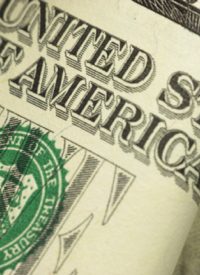
In a recent article here about the VAT (Value-Added Tax) being floated as another way to raise taxes, the author stated that a VAT “would force the 50 percent of people in the poor and middle classes who pay no income taxes at present to start to contribute to the ever-increasing costs of the nanny state.” Fortunately, the New York Times published a correction and a clarification.
According to the Times, which took a closer look at the data from the Tax Policy Center, “The stimulus programs of the last two years [under the Bush and Obama administrations] have increased the number of households that receive enough of a tax credit to wipe out their federal income tax liability … but income taxes aren’t the only kind of federal taxes that people pay.” There are payroll (Social Security and Medicare) taxes, capital gains taxes, as well as state and local taxes. In fact the Times confirms that “about three-quarters of all American households pay more in payroll taxes … than in income taxes.” When averaging the numbers together, “The typical family pays a lot of state and local taxes … almost half as much as in federal taxes.”
As far as the federal government is concerned, whether they are income taxes or payroll taxes, it is a distinction rather than a difference. As noted here and elsewhere, all receipts from taxpayers are deposited into the general fund from which disbursements are made to pay the government’s bills.
Is there a better number? What percentage of Americans pays no federal taxes at all? David Leonhardt, writing the in Economix Blog, says that by looking at the poorest fifth of all households in the country, the latest data show they pay a “total net federal tax rate [of] 4.3 percent. The average income-tax for this group was indeed below zero: -6.6 percent. But the combined rate of payroll, investment and excise taxes was 10.9 percent, leading to a net positive rate of 4.3 percent…. This suggests that fewer than half of them pay no federal taxes … that at most about 10 percent of all households pay no net federal taxes.”
The analysis by the Tax Policy Center confirms Leonhardt’s estimate. When measuring “tax units with zero or negative individual income tax,” the percent of all “tax units” is 46.9 percent. But when looking at “tax units with zero or negative income and payroll tax” is 13.4 percent, very close to Leonhardt’s estimate. [Emphasis added.] So, approximately one out of nine taxpayers pays no federal tax.
But it’s wise not to get bogged down in the minutiae. It’s wiser for the author to apologize for assuming that “50 percent of people in the poor and middle classes … pay no income taxes at present” and to get on with the business at hand. Taxpayers in total pay about $2.5 trillion in taxes to the federal government, while the government is spending in excess of $3.5 trillion, leaving a shortfall of $1 trillion “as far as the eye can see.” And this is why the trial balloon about a VAT continues ascending over Washington.
The disadvantages of a VAT were outlined here but an additional major criticism about a VAT was voiced by the Daily Caller.
As far as taxes go, the VAT is especially destructive. For one, it would require roughly doubling the current size of the IRS. Sixteen years ago, CBO estimated compliance and administrative costs for a VAT at $8.5 billion annually. That figure can safely be placed at more than $10 billion by now. The IRS’ entire budget is currently $12.1 billion. All of this is in addition to the 16,000 new IRS employees needed to enforce the health care bill.
And VAT regulations would expand the U.S. tax code which is already over 100,000 pages. Says the Daily Caller, “Most countries with VATs have at least three different rates. Politically incorrect products are hit with punitive rates. Danish car buyers, for example, pay the standard 25 percent VAT, plus a special 105 percent VAT on the first $11,000 of the car’s value, plus a third VAT of 180 percent on any remaining value.”
If all the conversation about taxes is how to raise them in order to close the deficit, then the continued expansion of government is inevitable, and all taxpayers, including those paying less than others, will find themselves in a higher tax bracket whether they like it or not. But the conversation is changing as Tea Partiers and limited-government constitutionalists are finding their voice. Expect the VAT trial balloon to catch more and more flak as the mid-term elections draw nearer.



